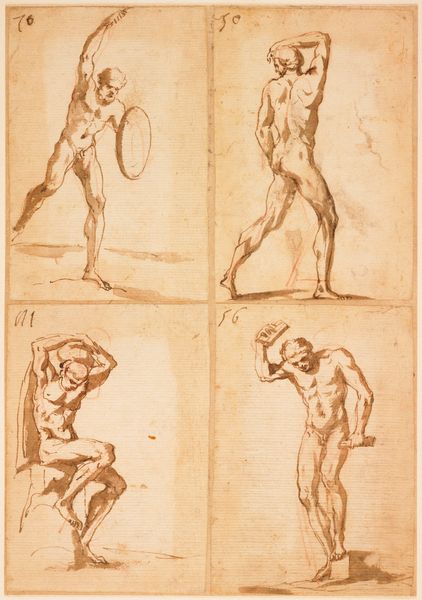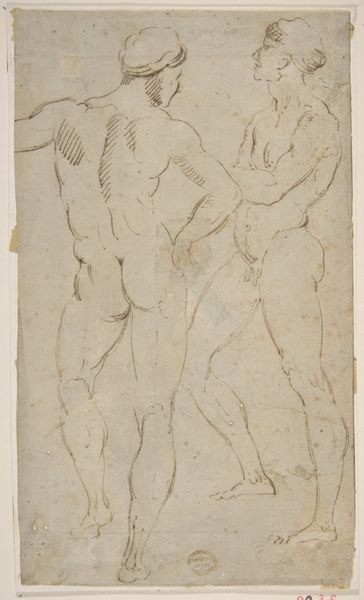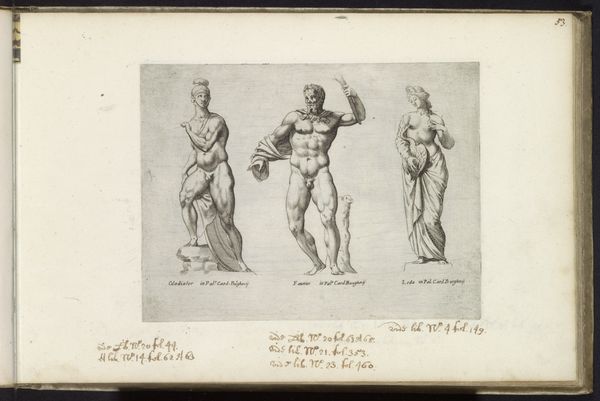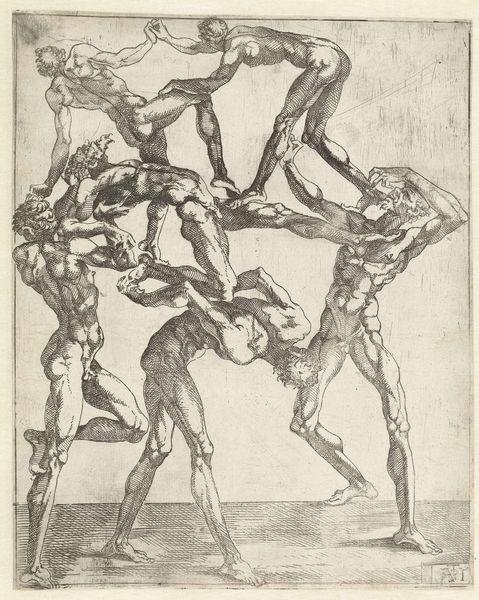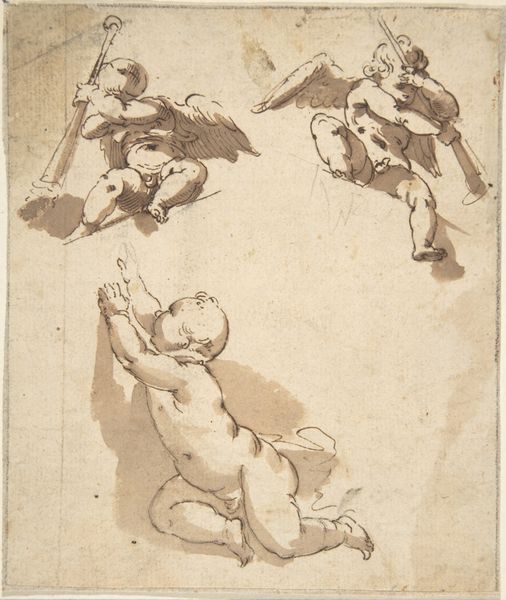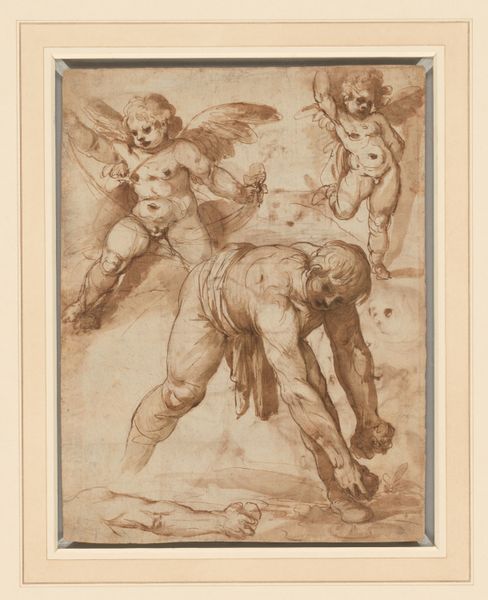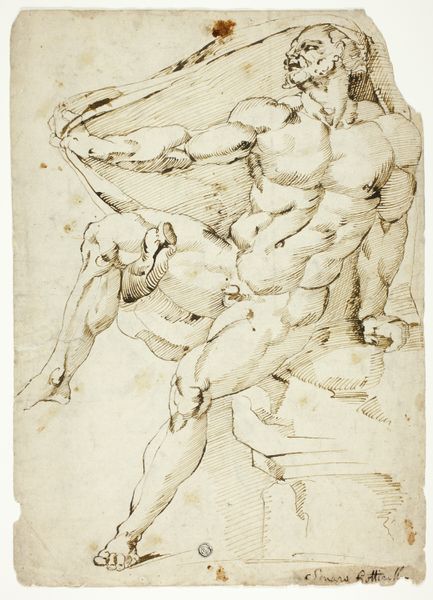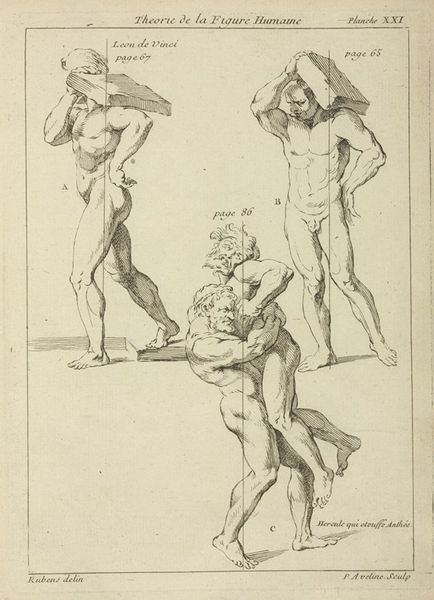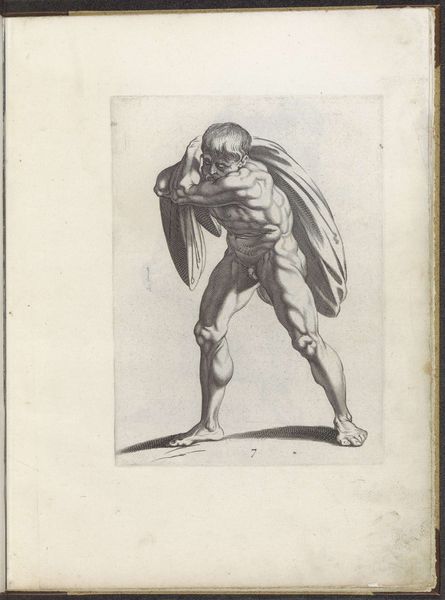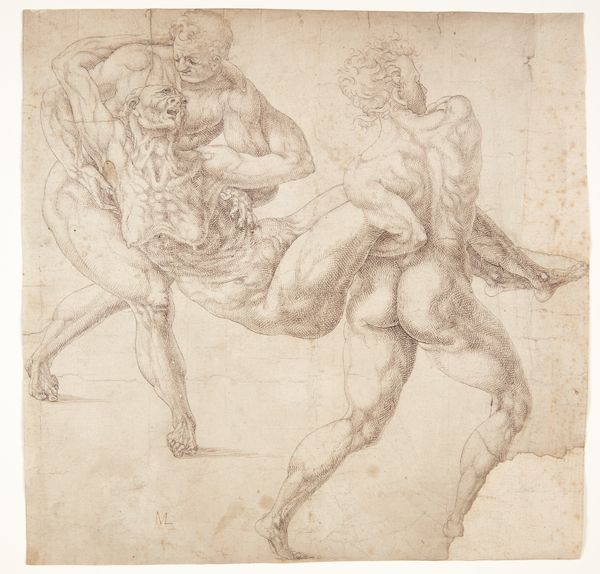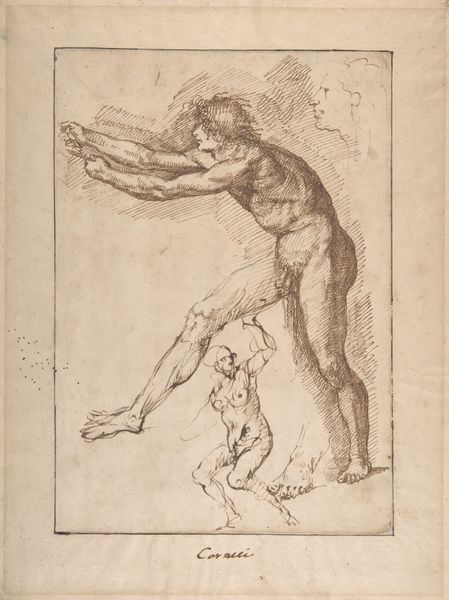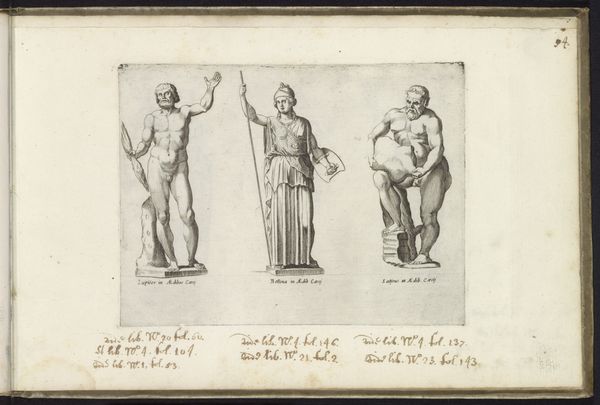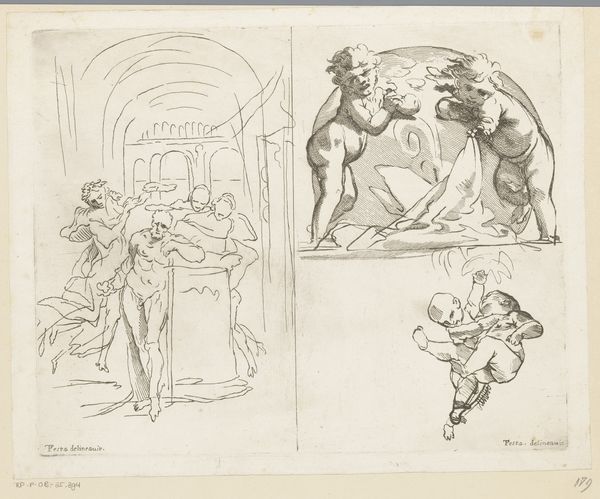
drawing
#
drawing
#
figuration
#
history-painting
#
academic-art
#
nude
Dimensions: 3 7/8 x 5 7/8 in. (9.84 x 14.92 cm) (sight)9 3/4 x 11 5/8 in. (24.77 x 29.53 cm) (outer frame)
Copyright: Public Domain
Curator: Welcome. We're standing before "Four Figure Studies," an 18th-century drawing from an anonymous hand here at the Minneapolis Institute of Art. Editor: These figures almost leap off the page. There's a palpable sense of dynamic tension in each of these studies. A wonderful, sepia-toned energy. Curator: Indeed. Consider these drawings as crucial steps in the academic art tradition. The piece serves as a potent reminder of the emphasis placed on mastering the human form in the context of history painting. It’s very interesting to see these figures that are each subtly exploring drama and idealized anatomy within a complex artistic ecosystem. Editor: Precisely, and think about the physical labor involved. We're looking at a meticulous application of ink, probably sepia or bistre, demanding both precision and a sensitivity to the materiality of the support itself. It makes you appreciate the artisan's command of their medium and labor of practice. Curator: And there’s something profound in recognizing the way these idealized forms mirrored and shaped social values and even reinforced established hierarchies of art academies. Editor: That's a crucial point. The focus was often about power and idealization – even consumption! Think about who commissioned, possessed, and gazed upon works like these! Curator: Yes, these "studies" hint at larger societal concerns, but also showcase the complex interplay of patronage, craftsmanship, and artistry. Editor: A fitting way to bring together materiality and history within this piece. Thank you for your time! Curator: You as well. A fresh look informs us all!
Comments
minneapolisinstituteofart about 2 years ago
⋮
Comparable in format and style to studies in the Italian sketchbooks of young Jacques-Louis David, which he executed when he was studying in Rome from 1775 to 1780, these eight drawings might be by an artist in his circle there. Copying antique sculptures was a major activity of pensioners at the French Academy in Rome, and these quickly sketched drawings seem to record this fundamental academic exercise. The figures' frenzied poses, fluttering drapery, and subtle modeling with wash suggest that they were drawn after antique bas reliefs--a battle of the centaurs, or scene of bacchic revelry, for example—with the artist isolating individual figures on the page from the complex sculpted context.
Join the conversation
Join millions of artists and users on Artera today and experience the ultimate creative platform.
